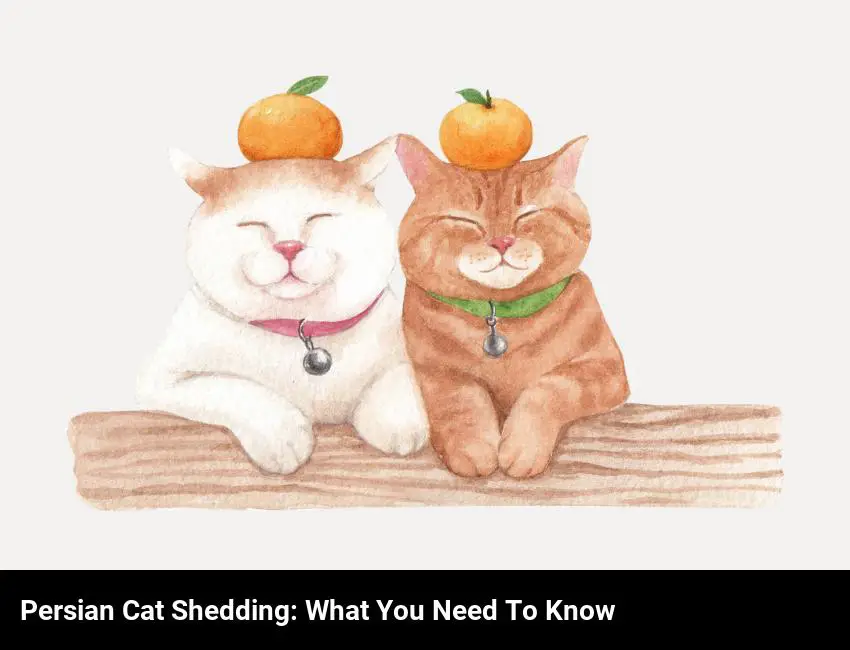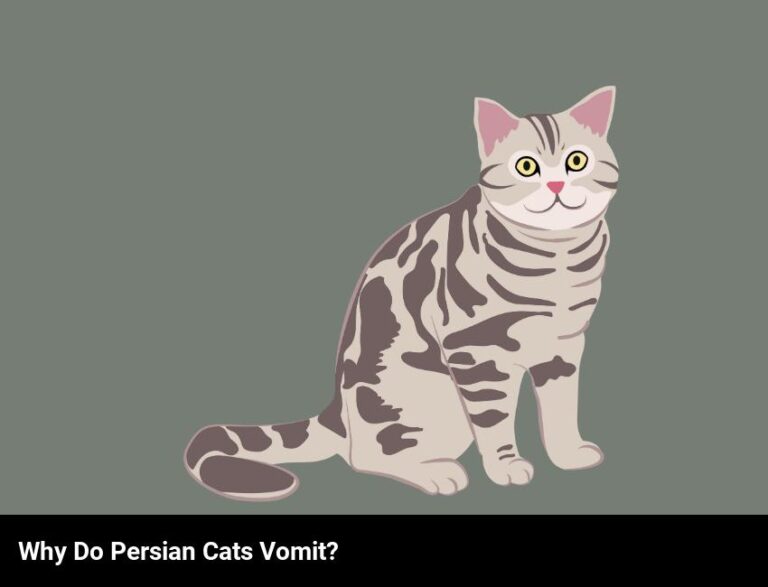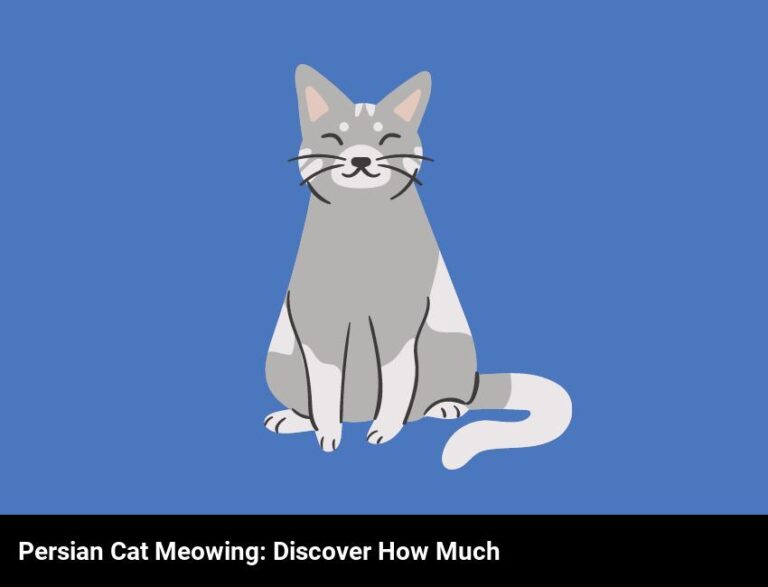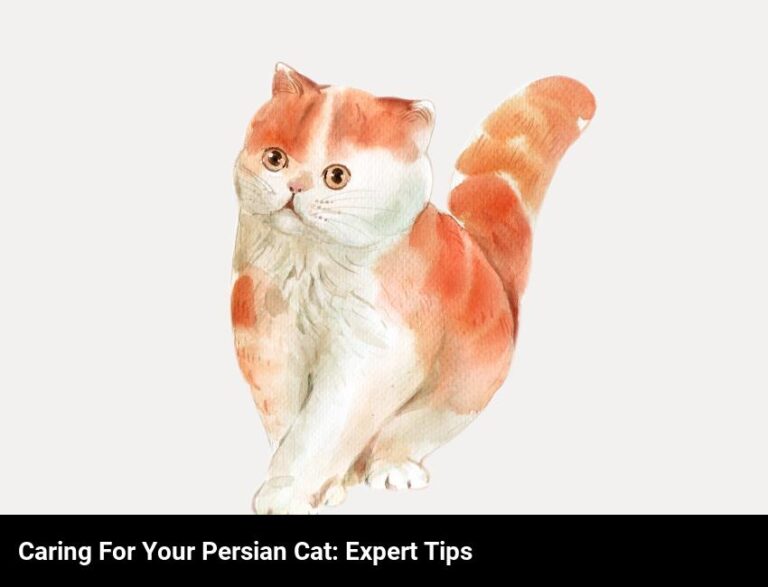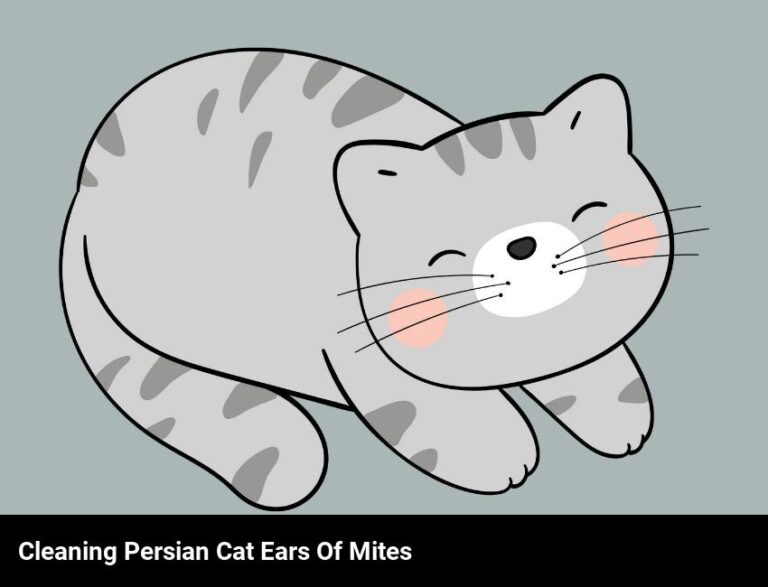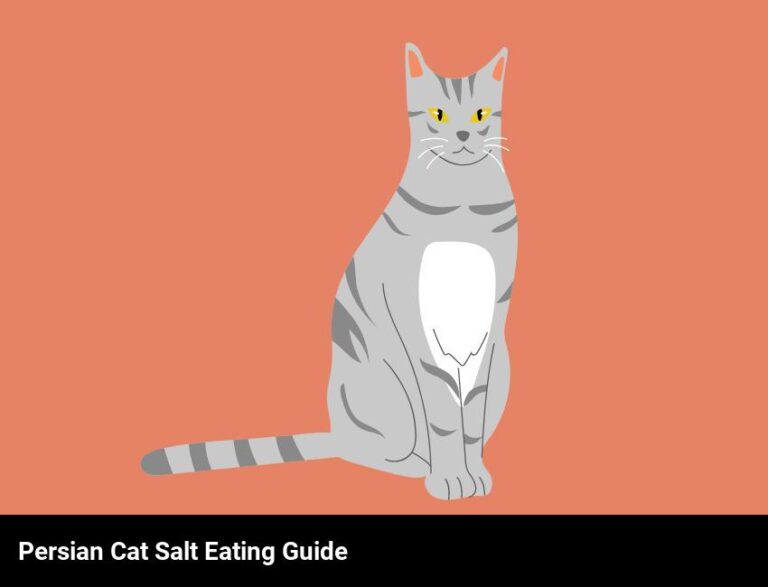Understanding Persian Cat Shedding
Persian cats shed regularly, and the amount of shedding depends on the season. They typically shed more during the spring and fall when their coats change with the weather. Regular brushing is important to help reduce shedding.
As a proud owner of a Persian Cat, I can attest to the fact that shedding is one of the most common issues that come with this breed of cats. With their long, luscious fur and my determination to keep them looking as beautiful as ever, I have done a lot of research on understanding Persian cat shedding.
I have discovered that there are a number of factors that come into play when it comes to Persian cat shedding. From the typical shedding cycle to understanding how often you should brush your Persian cat, there is a lot to know. On top of that, there are dietary changes you can make, grooming products you should use, and methods to control shedding. I will also discuss the environment that helps reduce shedding and the potential health issues that might be causing excessive shedding.
By the end of this blog, you will understand what goes into the shedding cycle of a Persian cat, how often you should brush them, and how to control shedding.
What is the typical shedding cycle of a persian cat?
Persian cats typically shed year round, however, they do go through a significant shedding period twice a year. During this period, they may shed more than usual and the hair may become more noticeable on furniture and clothing.
The shedding cycle of a Persian cat can be unpredictable but can generally be expected to peak in the spring and fall months. During this time, you may need to brush your Persian cat more often to help reduce the amount of loose fur and mats in their coat.
You may also want to increase the amount of grooming your Persian cat receives during the shedding season. Regularly brushing your cat’s coat can help to reduce the amount of hair that gets spread around the house, as well as remove dead fur and dander. Additionally, regular grooming can help keep your Persian cat’s coat in top condition, which is important for their health and appearance.
While the shedding cycle of a Persian cat may not always be predictable, understanding the typical patterns can help you be prepared for when it does occur. With regular brushing and grooming, you can help to reduce the amount of shedding and keep your Persian cat’s coat looking its best.
How often should you brush your persian cat to reduce shedding?
Brushing your Persian cat once or twice a week is a great way to reduce shedding. Regular brushing helps to keep your cat’s coat healthy and can also help to reduce dander, which is one of the main causes of allergies in humans.
Brushing your Persian cat weekly is also important for creating a strong bond between you and your pet. This is because you are getting to know your cat’s unique coat, texture, and patterns. Plus, regular brushing will help to stimulate their circulation, which helps them to stay healthy and comfortable.
When brushing your Persian cat, it is important to use the right brush. Choose one that is specifically designed for long-haired cats. This will help to reduce tangles and mats and make brushing easier. You should also make sure to use a brush with soft bristles. This will help to prevent any skin irritation.
Finally, it is important to remember that brushing should be a pleasant experience for your cat. Make sure to be gentle and patient when brushing, and always reward your cat with treats or words of affection. This will help to ensure that brushing is something that your cat looks forward to.
By following the tips above, you can help to reduce shedding and keep your Persian cat healthy and happy. So make sure to brush your Persian cat once or twice a week for best results.
What kind of grooming products should you use to reduce shedding?
If you’re looking for a way to reduce shedding in your Persian cat, first and foremost you should invest in a good grooming brush. Brushing your cat at least once a week is an effective way to remove excess fur and help keep your cat’s coat looking healthy and glossy. Look for a brush with natural bristles that will be gentle on your cat’s fur.
In addition to brushing, you may want to consider using a conditioner or detangler to help keep your cat’s coat soft and manageable. Conditioners can help keep your cat’s coat looking shiny and help reduce excess shedding. Don’t forget to look for a shampoo designed specifically for cats, as this will help keep your cat’s coat healthy and reduce shedding.
Finally, it’s important to make sure your cat is getting the proper nutrition. A poor diet can lead to a variety of health problems, including excessive shedding. Make sure your cat is eating high-quality food that is suitable for their age, size, and activity level. Supplementing with omega fatty acids can also help reduce shedding and promote a healthy, glossy coat.
Are there any dietary changes you can make to reduce shedding?
Yes! Absolutely! There are several dietary changes that you can make to reduce shedding in Persian cats. One of the most effective changes is to feed your cat high quality, highly digestible proteins. This will give your cat the essential nutrients to maintain a healthy coat and reduce shedding. Additionally, adding fatty acids to your cat’s diet can help improve the texture of their fur, reducing shedding.
You can also consider switching to a premium wet food. Wet food is more nutritious than dry food and can help keep your cat’s coat nourished and healthy. If you’re looking to switch to wet food, look for a variety that’s high in proteins and fatty acids.
Finally, make sure you’re giving your cat plenty of fresh water. Staying hydrated is essential for a healthy coat and can reduce shedding dramatically. If you’re concerned about your cat not drinking enough water, consider investing in a pet water fountain to keep them hydrated throughout the day.
These simple dietary changes can help reduce shedding in Persian cats and keep their coats healthy and beautiful. So, if you’re looking to reduce shedding in your Persian cat, give these dietary changes a try and see how they work for you.
How can you tell if your persian cat is shedding more than usual?
Are you worried that your Persian cat is shedding more than usual? If you’re not sure, there are a few telltale signs that can help you determine if your cat is experiencing excessive shedding.
First, take a look at your cat’s fur. If it looks thinner than usual, this could be a sign that your cat is shedding more than normal. You can also feel the fur and check if it’s softer than usual. If it is, this could be another sign of excessive shedding.
Next, check the area around your cat’s bed or favorite spot. If you see fur clumps or mats, this could mean that your cat is losing too much fur. You can also look for bald spots on your cat, which can be a sign of excessive shedding as well.
Finally, pay attention to how often you have to groom your cat. If you find yourself brushing your cat more often than usual, this could mean they are shedding too much fur. If you have other cats in the house, look for signs of excessive shedding in them as well, as it could be a sign that something is wrong with the environment.
By keeping an eye out for these signs, you can easily tell if your Persian cat is shedding more than usual. If you’re seeing any of the symptoms mentioned above, it’s best to take your cat to the vet for a check-up.
What are some methods for controlling shedding in a persian cat?
If you own a Persian cat, you know that its luxurious coat comes with a downside: shedding. Fortunately, there are several methods you can use to control shedding and keep your cat looking their best.
Start with regular grooming; brush and comb your cat’s fur at least once a week using a specially designed soft brush. This will help remove dead hairs, reduce excess shedding and distribute natural oils throughout their coat.
If you bathe your cat regularly, use a shampoo formulated for cats, such as one with oatmeal or aloe vera, to moisturize and protect their skin. Also, use a conditioner to help prevent mats from forming.
You can also reduce shedding by providing your cat with a healthy diet and plenty of exercise. Feed your cat a balanced diet with plenty of high-quality proteins and fatty acids, which are important for maintaining healthy skin and coat. Make sure your cat has plenty of opportunities for physical activity, such as playing with toys or exploring the outdoors.
Finally, make sure your cat is getting enough sleep. Fatigue can cause increased shedding, so make sure your cat is getting enough rest. If your cat seems stressed or anxious, you may need to consult your vet to find ways to reduce their stress levels.
By following these simple steps, you can help keep your Persian cat’s coat looking beautiful and reduce the amount of shedding.
What kind of environment can help reduce shedding?
The environment that you create for your Persian cat can truly help reduce shedding! You can do this by making sure your cat is getting the proper nutrition and exercise.
Start by feeding your cat a high-quality diet that’s specially formulated for cats with long coats. This will ensure that your cat is getting all the necessary nutrients that they need to stay healthy and reduce shedding.
You should also make sure your cat gets plenty of exercise. Take your cat for regular walks or play fetch with them. This will help keep their fur from becoming matted and reduce shedding.
Finally, you should brush your cat regularly. Brushing your cat’s fur will help remove loose fur and debris that can cause shedding.
All of these things will help reduce shedding, but it’s important to remember that shedding is natural and you can’t completely prevent it. You can, however, create an environment that will help reduce shedding and keep your Persian cat happy and healthy.
Are there any health issues that may be causing excessive shedding?
Yes, there can be a few different health issues that may be causing excessive shedding in Persian cats. The most common health issue associated with excessive shedding is a skin infection caused by a type of fungus called Malassezia. This fungus is found on the surface of the skin and feeds on the oils produced by the skin, resulting in inflammation and irritation. If left untreated, the infection can spread and lead to hair loss in the affected areas.
Other potential health issues that may cause excessive shedding are allergies, poor nutrition, parasites, or a skin condition called ringworm. Allergies can cause the skin to become itchy and inflamed, leading to excessive shedding. Poor nutrition can result in hair loss as the cat’s body is not getting the necessary nutrients to keep fur healthy. Parasites, such as fleas and mites, can also lead to excessive shedding, as they feed on the cat’s blood and cause irritation. Ringworm is a fungal skin condition that can cause patches of hair loss and flaky, itchy skin.
If your Persian cat is experiencing excessive shedding, it is important to take your cat to the vet to identify and treat any underlying health issues. Your vet will be able to carry out tests to identify any potential infections or parasites, as well as check for any signs of allergies or poor nutrition. Treatment may include anti-fungal or anti-parasitic medications, as well as dietary changes or supplements.
By addressing any underlying health issues, you can help reduce the amount of shedding your Persian cat experiences. This will help to keep your cat’s fur healthy and looking its best.
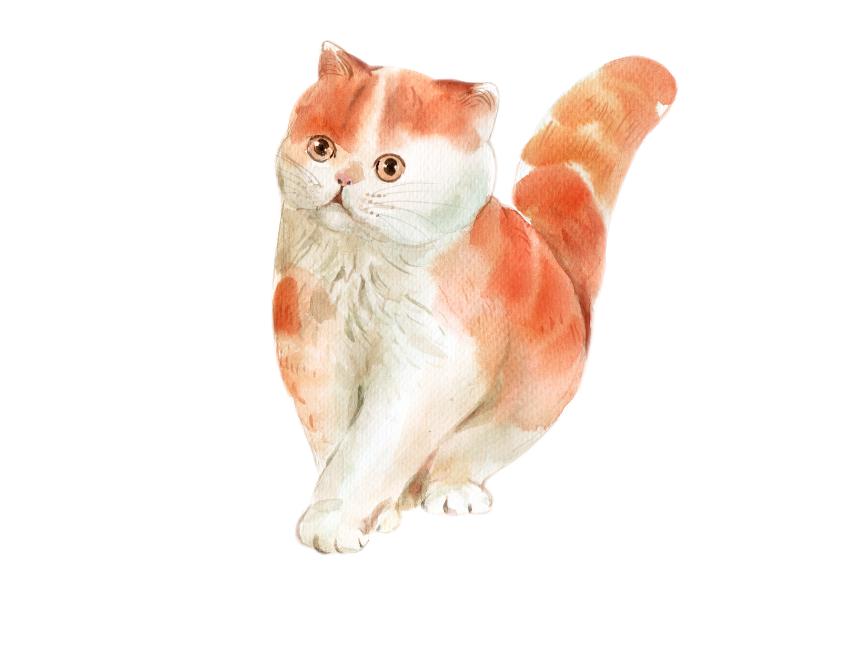
Frequently Asked Questions
What type of coat does a persian cat have and does it affect its shedding?
Persian cats have long, thick coats that require regular grooming to keep their fur from matting. This coat also tends to increase shedding, so daily brushing is recommended to keep shedding under control. Persian cats can be either longhaired or shorthaired, but both varieties shed year-round and require frequent grooming. By understanding the coat of a Persian cat and brushing it regularly, you can help reduce the amount of shedding.
How can you tell if your persian cat is shedding enough?
If your Persian cat has healthy, glossy fur and no bald spots, it is probably shedding enough. You can also check their fur for any mats or tangles. If these are few and far between, your cat is probably shedding enough. Additionally, you can inspect their fur for any excess fur and ensure your cat’s coat is clean.
Are there any specific dietary needs for persian cats to help manage shedding?
Yes, there are specific dietary needs that can help manage shedding in Persian cats. Ensuring your cat has a balanced and nutritious diet that includes essential fatty acids, proteins, and vitamins can help minimize shedding. Feeding your cat a high-quality pet food with these nutrients will help keep its skin and coat healthy, promoting less shedding. Additionally, make sure your cat has access to plenty of fresh, clean water to stay hydrated.

